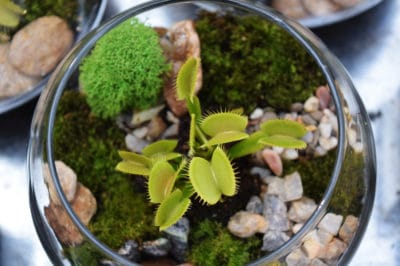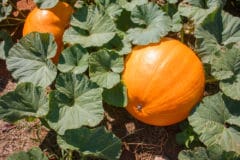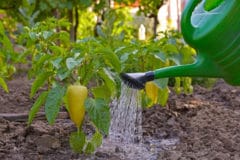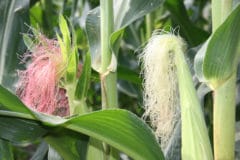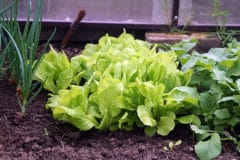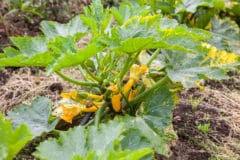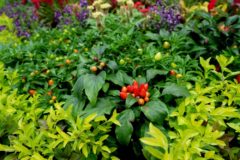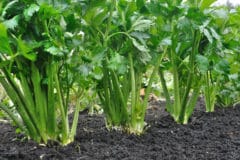Terrarium
What is a terrarium? It’s like a garden in a jar. Use any dish, bowl or jar to create a terrarium. It needs to hold a small amount of sand and moss in the bottom as a growing medium. It should also allow lots of sunlight to reach the plants, so a clear dish is the best choice.
Carnivorous plants are subtropical wetland dwellers that like humidity. Your terrarium needs to trap moisture and hold it in. If you have an enclosed terrarium, it will require some extra care to maintain plant health.
Soil
Carnivorous plants thrive in soils devoid of nutrients. It’s their nature to seek nutrients through the insects that they catch. Use a mix of peat moss and sand as a growing medium. Do not add fertilizers or compost to the mix.
A layer of gravel or marbles at the bottom of the terrarium may be helpful to determine water levels, but it isn’t necessary. It will depend on the depth of your container and how much growing medium is required.
Plant Species
Most beginner carnivorous plant gardeners begin with the Venus Fly Trap. It is not too fussy when it comes to care and it’s rewarding. Take caution when mixing carnivorous plants in a terrarium. Some species will need things that are detrimental to another species so it can become complicated to maintain a balance.
Other popular carnivorous plants to grow include:
- Pitcher Plants
- Sundews
- Butterworts
- Cobra Lilies
Feeding
Plants with open-air containers typically do not need feeding. Depending on their location, they can usually catch the insects they need to survive on their own. It is not recommended to intentionally trigger a Venus Fly Trap or to feed it too often. Each trap only functions five or six times before falling off.
Enclosed terrariums will need more care. You’ll have to hand-feed your plants since they have no access to natural insects. Gardeners often purchase crickets from pet stores to nourish enclosed terrariums.
Over Winter
Some species, like the Venus Fly Trap, require a period of dormancy through the winter season. Don’t panic if you notice your terrarium is receding into dormancy, this is normal. If you live in a warm climate without cool seasons, put the terrarium in the refrigerator for two months to artificially create a dormant period.
If you’d rather not deal with worrying about dormancy, there are other species to grow. Sundews do not require dormant periods and are simple to grow.
